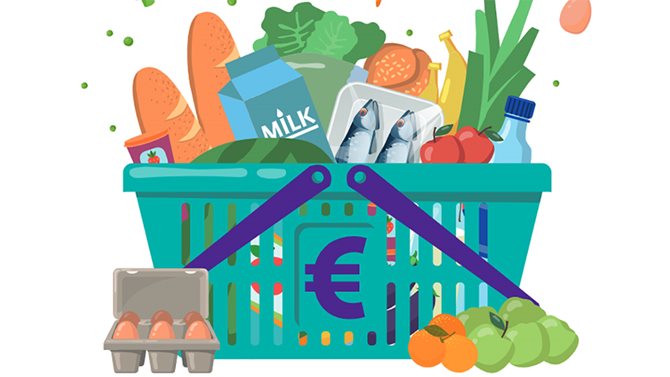The Cost of a Healthy Food Basket in Ireland 2014 - 2022

- Project start date: 1 January 2014
- Project status: Completed
- Project type: Nutrition
- Discipline: Food poverty
- Author/s: Minimum Essential Standards of Living Research Centre at St. Vincent de Paul
Research objective
The research objective is to establish the cost of a minimum essential food basket for households most at risk of food poverty.
The Minimum Essential Standard of Living (MESL) is the minimum amount of money a person or family needs to meet basic physical, psychological and social needs. It is based on what the public agrees is necessary for daily life. Each year the MESL is updated to reflect price changes. The MESL data is produced by the Research Centre at St. Vincent de Paul.
This research examines the food element of the MESL data in Ireland.
Cost of a healthy food basket in Ireland
The minimum essential food basket is created by working with the public to decide what foods are needed to meet basic needs and be part of normal social life. See the sample menus below.
This research looks at how much it costs for different households to afford this basic food basket especially those most at risk of food poverty.
What the study examines
The study looks at:
1. The cost of a minimum essential food basket.
2. How food costs compare to the core minimum essential standard of living for 6 household types in Ireland, in both urban and rural areas:
- 2 parents with 2 children (pre-school and primary school age)
- 2 parents with 2 children (primary and secondary school age)
- One parent with 2 children (pre-school and primary school age)
- Single adult male of working age living alone
- Female pensioner living alone
- Pensioner couple
3. A breakdown of food costs by category.
4. How much of a household’s income is spent on food, for 2 income scenarios:
- Families relying on social welfare
- Families with one adult working at the national minimum wage.
5. The cost of food specifically for children.
Research report
- Title: The cost of a healthy food basket in Ireland - 2014-2022
- Publication date: 12 September 2023
- Summary: Food basket studies in Ireland - 2022.
- Findings:
- Low income households need to spend between 12% and 32% of their take-home income to buy a healthy minimum essential food basket. This is dependent on household composition and location
- Food costs rise as children grow older, food is a significant cost for households with an adolescent. The cost of food for a teenager was more than double the cost of food for a pre-school child.
- Food costs are more expensive for rural households with the exception of the single adult
- Households receiving state benefits spend a larger percentage of take home income on the food basket than households with an employed adult.
- This research highlights the challenges when trying to balance buying a healthy food basket with other weekly household expenses.
- Meat, breads and cereals, milk, cheese, eggs, fruit, and vegetables account for the largest share of the food basket.
- Spending on restaurants, cafes, fast food, takeaways and visitors are an important part of the food basket highlighting the social and cultural aspects of food. It ensures that households can participate in activities that are considered to be part of everyday life.
You can download the report of this study below.
The reports of basket studies from previous years are also available below.
The cost of a healthy food basket in Ireland in 2020 [PDF]
The cost of a healthy food basket in Ireland in 2018 [PDF]
The cost of a healthy food basket in Ireland in 2016 [PDF]
The cost of a healthy food basket in Ireland in 2014 [PDF]
Other outputs
Summary reports
2014 | 2016 | 2018 | 2020 | 2022
7-day sample menus
Similar research
The cost of a healthy food basket in Northern Ireland 2014-2022




